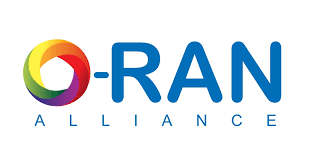Seed funding of $200,000 has been awarded by O-RAN Alliance to the Institute for the Wireless Internet of Things at Northeastern University
The O-RAN Alliance announced the result of its call for proposals for seed funding of platforms that support research and development of next generation Open Radio Access Network (O-RAN) infrastructure, the entity said in a release.
Seed funding of $200,000 has been awarded by O-RAN Alliance to the Institute for the Wireless Internet of Things at Northeastern University for their proposal to develop an O-RAN digital twin platform based on the Colosseum network emulator, with the capability to automate end-to-end AI/ML development, integration and testing.
“Openness, programmability, and intelligence are key to wireless innovation,” said Tommaso Melodia, director of the Institute for the Wireless Internet of Things. “We are excited to work with the O-RAN Alliance to develop future architectures, algorithmic and software frameworks that leverage Colosseum – the Open RAN Digital Twin – and our OpenRAN Gym toolset to enable end-to-end testing of AI/ML closed-loop control in programmable networks.”
The funding initiative was led by O-RAN Alliance’s next Generation Research Group (nGRG). The main goal of this group is to provide a forum to facilitate O-RAN related 6G research efforts and determine how O-RAN may evolve to support mobile wireless networks in the 6G timeframe and beyond, by leveraging industry and academic 6G research efforts worldwide. The O-RAN Alliance also noted that the purpose of the seed funding is to be a significant enabler for broader funding of research platforms for next generation infrastructure.
The O-RAN Alliance said that academic and other research organizations were invited to submit their proposals related to next generation infrastructure for evolving O-RAN architecture. A total of 17 applications were submitted by academic and research organizations from North America, Europe and Asia. The evaluation and final selection were based on three criteria:
-Potential impact in advancing O-RAN nGRG’s goals for research and development for next generation infrastructure
-Ability to leverage the provided funding for future research efforts benefiting next generation infrastructure, including funding from other sources
-A track record in successful development of research platforms as well as any existing lab infrastructure that may be utilized for projects using current and future funding
“The O-RAN Alliance continues to focus on developing a stable and mature specification framework for open and intelligent RAN, enabling the RAN industry to deliver commercial products and solutions,” said Alex Jinsung Choi, chair of the board of O-RAN ALLIANCE, and SVP Network Technology at Deutsche Telekom. “It’s great to see such high interest and cooperation in research for open innovations in future RAN generations, which will provide the basis for upcoming detailed specifications by the O-RAN Alliance to enable even higher-performing and more feature-rich mobile networks.”
In August, the O-RAN Alliance approved four testbeds, three of which are operated by the Platforms for Advanced Wireless Research (PAWR), as new Open Testing and Integration Centres (OTICs) in North America.
The PAWR locations include the Institute for the Wireless Internet of Things at Northeastern University, which is home to the massive, software-defined Colosseum testbed; the POWDER testbed in Salt Lake City; the ARA testbed in central Iowa, focused on research for connectivity in rural areas. The fourth new OTIC is located in the Washington, D.C./Arlington, Virginia area and is a partnership between Virginia Tech, AT&T, Dish Network and Verizon. That Commonwealth Cyber Initiative (CCI) xG Testbed at Virginia Tech focuses on interoperability, programmabilty and security.
